Listen up! Hearken’s got something to say


SO MUCH GOOD STUFF that I almost don’t know where to start. Good thing, then, that we’re going to hear all about it from chief awesome lady boss herself, Jennifer Brandel. Jenn and co-founder Corey Haines went through our program more than a year ago, as part of the Matter Four cohort (back in those days Hearken was called Curious Nation). They’ve since been (mainly) hunkered down in their hometown, Chicago, refining their product, growing the Hearken team, and welcoming some prestigious new clients on board. I caught up with Jenn to hear more about how Hearken’s technology for involving audiences in the editorial process is being used in the news industry and beyond. And I got the scoop on a brand new tool for journalists that the team is about to introduce.
RB: Jenn, I follow Hearken closely on Twitter and I’ve seen you retweeting a constant stream of interesting “powered by Hearken” stories, such as the San Francisco Chronicle and KQED’s recent exploration of homelessness in the Bay Area. Can you tell me about some of the ways your clients have been using your technology that’s led to the production of really exciting content?
JB: We now have about 50 news organizations in 8 different countries. I’m excited about our foreign clients — they’ve been really taking this and running with it and producing fantastic stories. We’re bringing on various languages; we just brought a Hungarian organization called Mediaworks on board. They have lots different publications doing a great job. One of our partners, the ABC in Australia, is also shining. They ran a very successful short series that based around the recent federal election, called Curious Campaign, where they tracked the campaign questions, and got somewhere along the lines of fourteen hundred questions in the course of a couple weeks! It was very original and interesting and different from the normal kind of echo chamber-y campaign coverage. Everything from how electoral boundaries are determined to why pencils are used at polling booths.
Some of our clients are also using Hearken for follow-up stories that react to news events. Our partner, Reveal (The Center for Investigative Reporting), is doing some stories based on people’s questions around mass shootings in America in response to the recent Orlando massacre. Hearken can be used not just to create new stories that don’t necessarily align with the timeliness of the news cycle, but that are also directly related to current events.
We also have several commercial television stations that have launched with us, and we’re in conversations with some big, big news organizations, but we’re not allowed to say who they are!
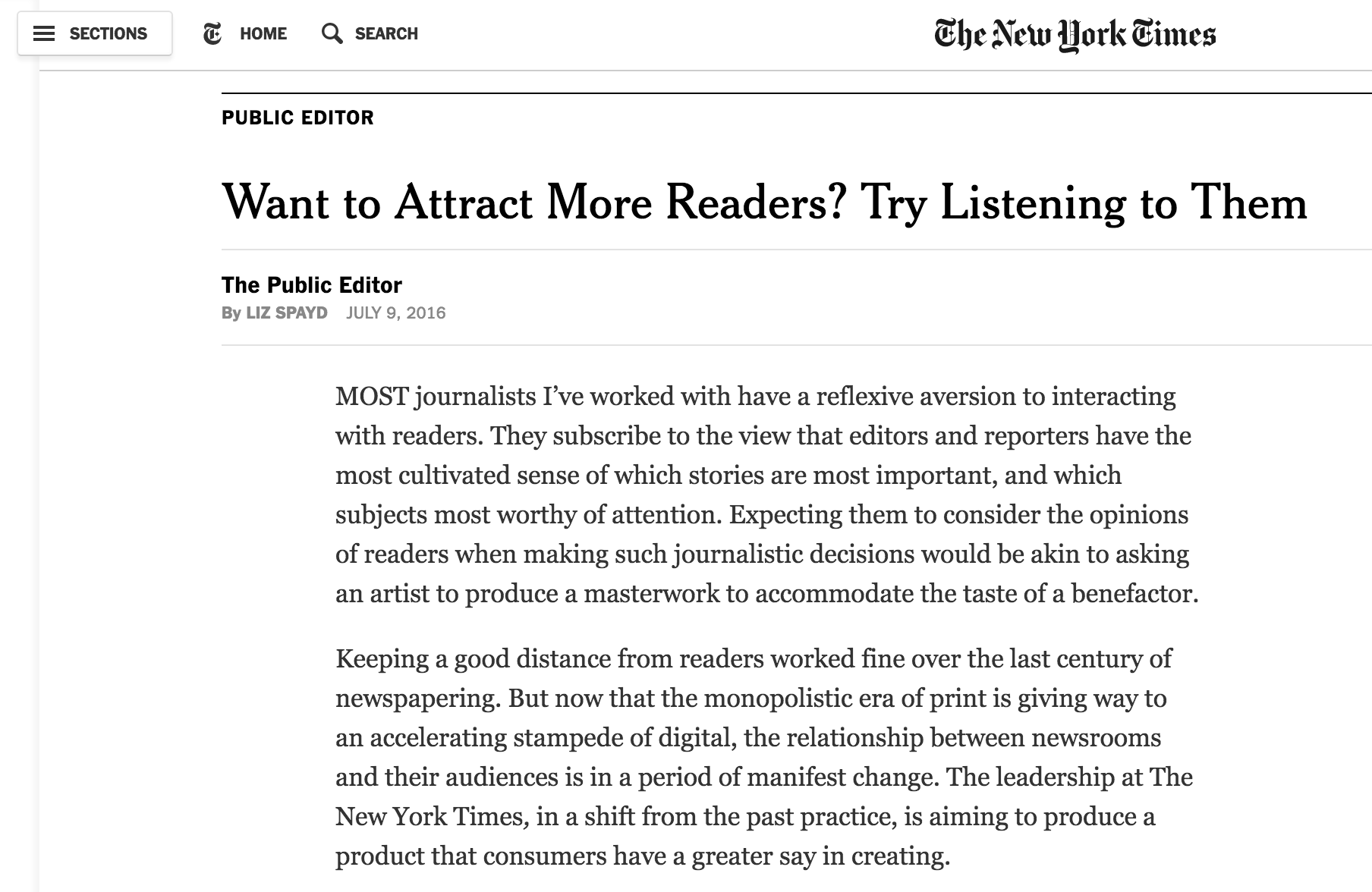
RB: There was some indirect support recently for what Hearken’s doing from Liz Spayd, the new public editor at the New York Times. In her first column she talks about how essential it is for news organizations to listen to their audiences if they want to attract more readers — basically saying all newsrooms need to be on Hearken! And then there was a retaliatory piece in Slate saying Spayd had got it all wrong. I was wondering how you responded to that debate bursting out into the public arena.
JB: It was very exciting and adrenaline-inducing to have an institution as respected as The New York Times saying, in very similar language, what we’ve been saying for years! It’s always good to validate our premise. And then to see that Slate follow-up, it was just evidence of this culture war that’s happening in newsrooms, that’s playing out in editorial meetings and strategic decision-making around what role the audience has in our journalism. I think the Slate article represents the traditional, conservative “journalists know best, audiences don’t know what they want, they’re an ignorant mass” idea, which is obviously not the premise we’re running with and that’s not the premise the New York Times’ public editor is running with. There have been a couple responses. Jeff Jarvis wrote a really good one.
You can’t change everyone’s minds overnight but I think this is an interesting and good moment for dialogue. For the New York Times to be standing up and saying loudly and proudly that your audience is more than the sum of its clicks, and that if you want to really attract more people you have to build deeper relationships, is music to our ears.
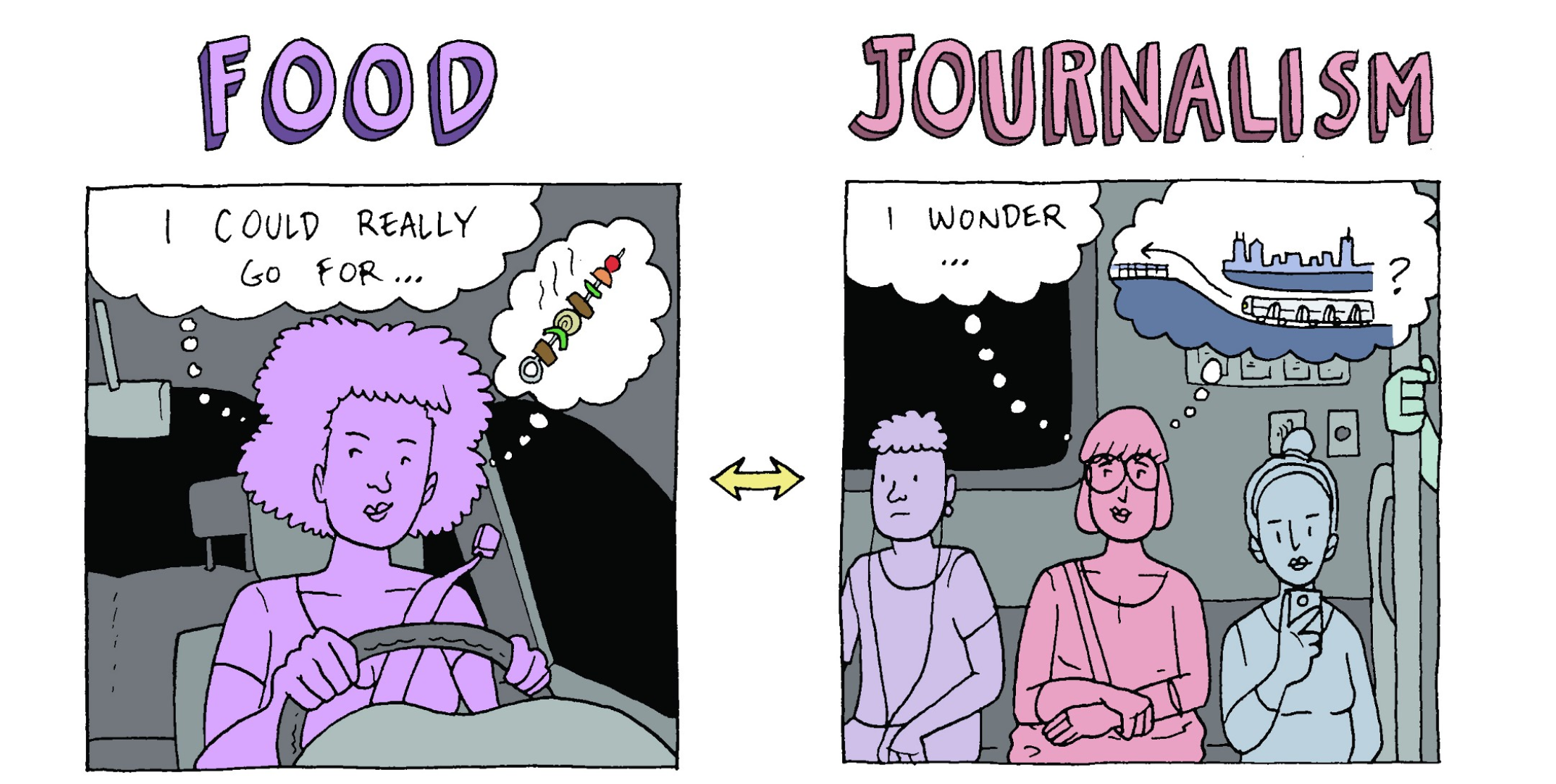
RB: You’ve also been stoking this dialogue very beautifully with your Medium collection. That piece that compared food and journalism using comic book artwork was so innovative. Can you let us into your secrets in terms of how you are establishing yourselves as thought leaders in this niche space, and using Medium to do that?
JB: I’m a former reporter but I can’t produce stories anymore because I’m too busy looking at QuickBooks and trying to hire people. Medium has become a fun outlet for me as a content producer, which is what I’ve been doing for the last 15 years. I so enjoy the freedom to produce the kinds of opinion pieces that no institution would be inviting me to write or letting me write.
It’s been a rewarding creative outlet for me to talk more about what we do in a bit more of a philosophical sense than in a pure sales, here’s how we solve your problem, buy, buy, buy now kind of sense. It’s also been helpful, as I’ve been in touch with so many newsrooms now in the process of selling, to articulate some of the challenges that we face both as a company and as an industry, moving forward from a real old way of top-down thinking into a new era.
The comics post was the result of an inspired shower in Miami, just trying to think about how to say this one thing that I kept making messy analogies for. The idea of comparing it to food seemed like the neatest way. It’s nice to be a CEO and have control of the budget and to be able to come out of the shower, write to a comics artist I know, and, a month or two later, make the piece!
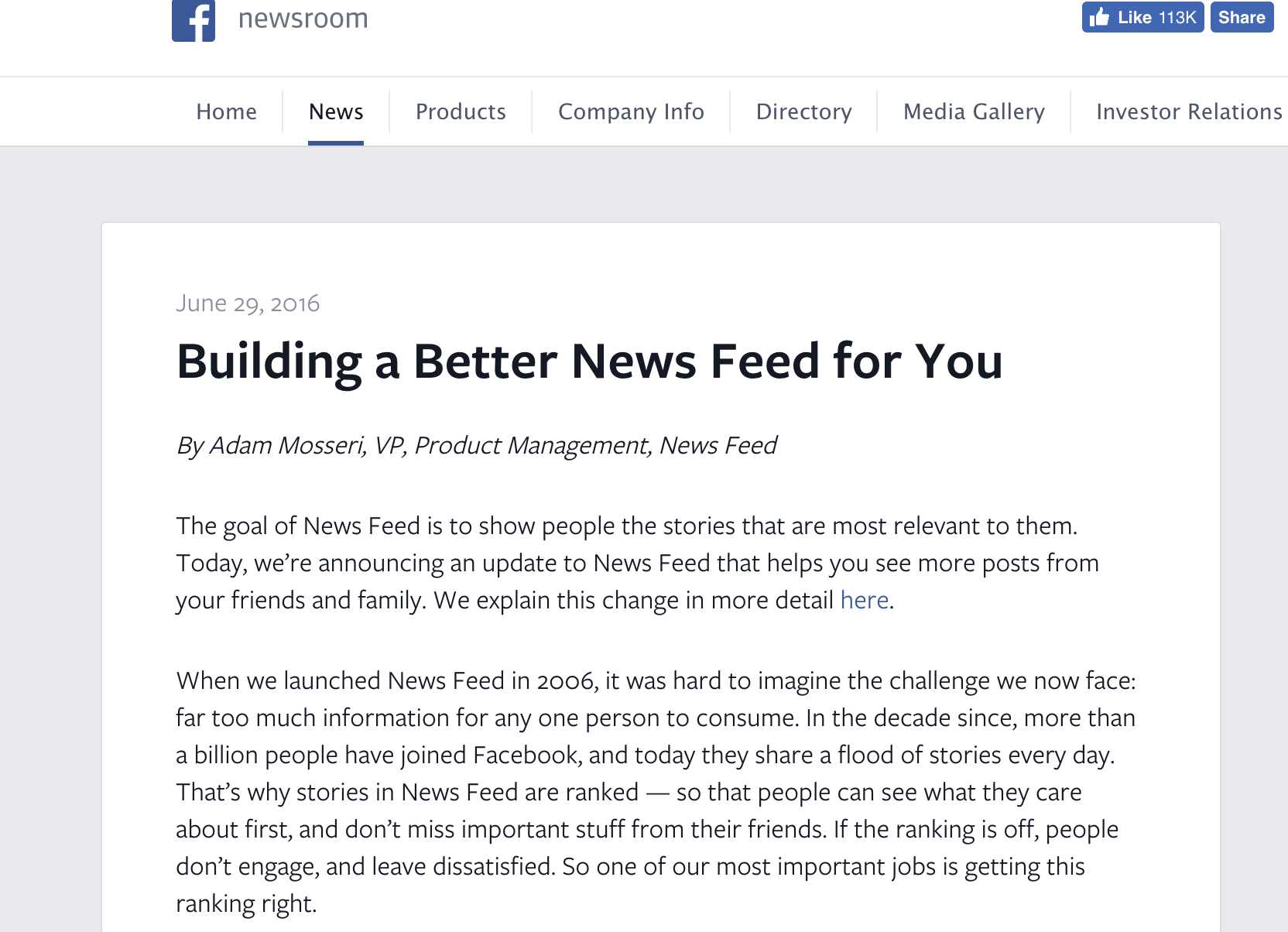
RB: That was also an incredibly timely piece because it came right off the back of the news that Facebook was tweaking its news feed algorithm to prioritize more “relevant” content. I thought you capitalized on that so well, saying to publishers that if you go about this the right way then relevance is not something to be afraid of.
JB: Yeah, that was just pure luck! We were actually going to post the comic two days earlier and we had no idea about Facebook but since it came out at that point we put pause on there and just thought, how do we actually work the news into this, because there is overlap. So that was a happy accident.
RB: You mentioned you’re working with different multimedia entities in the U.S. and abroad, across print, web, TV, radio, podcasting. I was wondering is there a certain type of client you’re now going after? Is there anywhere you’d like to grow either geographically or content-production-wise?
There’s nowhere this can’t work — we’re seeing that this whole approach goes beyond news. We were recently excited to announce that the Online News Association Conference is going to be using Hearken to try and collect questions people have for presenters before they present so the presenters can make more relevant presentations. It’s the same thing we’re doing but instead of thinking about the end product as an article, it’s about a produced, live, informational event like a conference panel or a speaking engagement. This a different market for us. We don’t have expertise in conferences and a ton of connections but it’s the same idea applied there. So I’m excited about additional markets beyond news that we are a good fit for, that we don’t need to change our technology much for. It’s just changing the way we frame it.
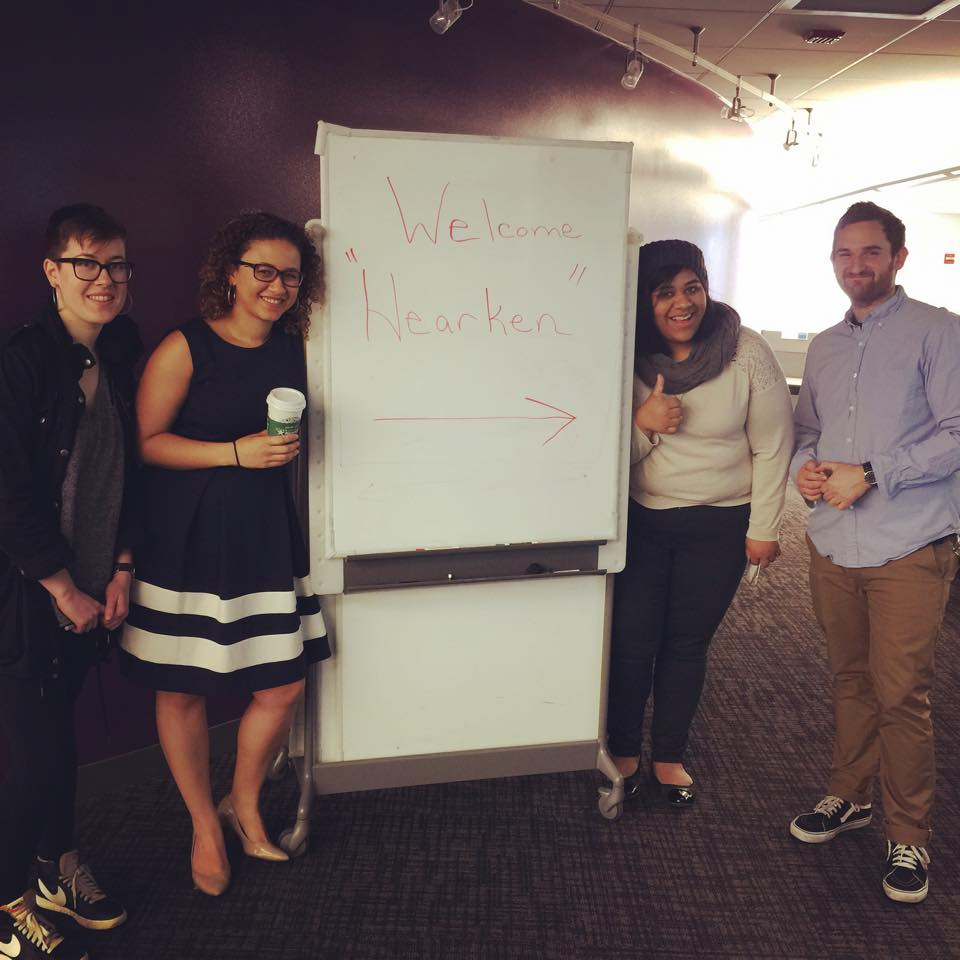
RB: There are so many different places you could take that use case! I can imagine it in academic institutions, even self-help.
Tell me about another area of growth at Hearken — that’s your team.
JB: We’ve been hiring for another Community Manager position, and we’re also looking for a Sales Account Manager because right now I’m our only sales person! The inbound interest has continued, which has been great, but my schedule has continued to get crazier so we need someone to help shepherd those relationships along for the people who reach out with interest. So that’s our next position.
RB: What would you say is the biggest challenge that you’re wrangling right now in your CEO life?
JB: I think the biggest challenge is just that differential between burn rate and success, and how close can you get to the bottom of what you have in the bank before you can prove yourself to the point where you don’t need to raise more money? We’ve always had the idea that we want to be revenue-based and not user-based, so we really want to have money in the bank. We started charging people out of the gate, they started paying for it which was really fantastic and helpful, but we’re kind of just racing the clock — the more bodies we bring on, the higher our burn rate. We are basically just testing how quickly can we bring on new clients and show them success so we hopefully don’t have to raise again. I’m not opposed to raising again if we have to, I just think it be great not to need to.

RB: I hear there’s a new product in the works at Hearken. Can we get a sneak preview?
JB: Yes, we’re unveiling a new product called the Interactive Reporter’s Notebook in a m0nth or two that’s going to become part of our system. This is one thing that I wanted to actually create a couple years ago at WBEZ but we didn’t have the funding or the bandwidth. It’s testing a new idea: if you allow the public to see what you’re working on as you’re working on that in a formalized way, can reporters get a bigger crowd for their story when it finally publishes? Can they get a great degree of interest from people, and help from them along the way as they’re reporting? And can that allow them to to create better reporting because they have more feedback before the product?
It’s really like design thinking at the story level but getting the opportunity to have more iterative impact, beyond just getting a new idea and having it be assigned. Instead there’ll be little focus groups on stories as they’re going out there. That’s really exciting but it’s terrifying as well because I’m not a reporter at this moment in time so I can’t be our test case — but we have a lot of newsrooms excited about it. We’re hoping it’ll be another tool that will draw people toward us.
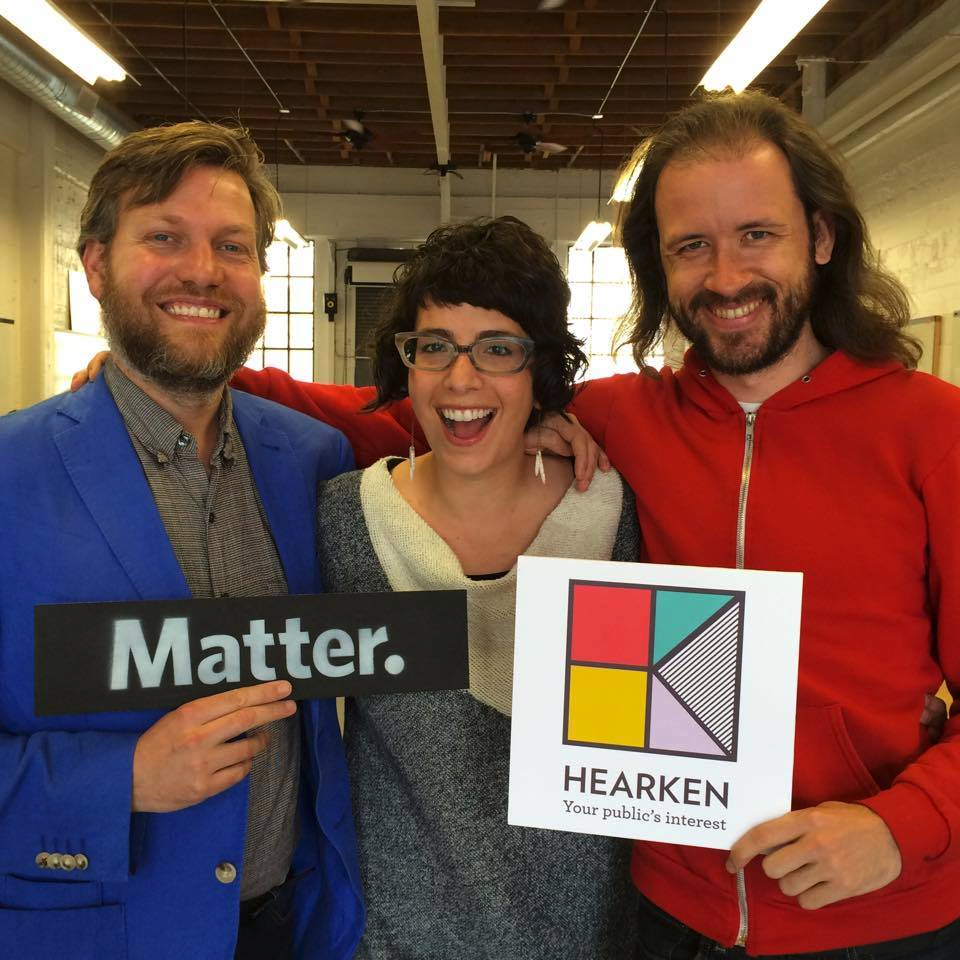
RB: It’s not that long since you graduated from our program. Do you have any wise words of advice for our Matter Six entrepreneurs as they face their own “drunken walk”?
JB: All through Matter and through Demo Day and even very recently I’ve been in a white knuckle, like “I don’t know if this is going to work” phase. I still feel that way on a business level. I don’t know if we’ll get the money we need and there’s always that risk of going out of business, even if the idea is great and the people are great, there are so many factors involved. But I think it’s a constant state and that it’s actually a state where you can be really innovative and scrappy. It’s a fertile way of being because the second you are comfortable is the second you stop thinking creatively. It’s actually a really important thing to have that doubt and to be questioning what you’re doing all the time.
RB: So they should try to be comfortable with the discomfort and channel that kind of nervous energy into making stuff happen as opposed to being paralyzed by it?
JB: Yes, exactly. I think comfort with ambiguity is really the state that the next generation of leaders is going to have to live with because everything is up in the air. The better you can get at being comfortable with the ambiguity, the longer you can be in a risk-taking mindset, the longer you can create these things that no one else can.
Jennifer Brandel is CEO of Hearken. For even more good stuff, follow her on Twitter, and follow Hearken on Medium.

